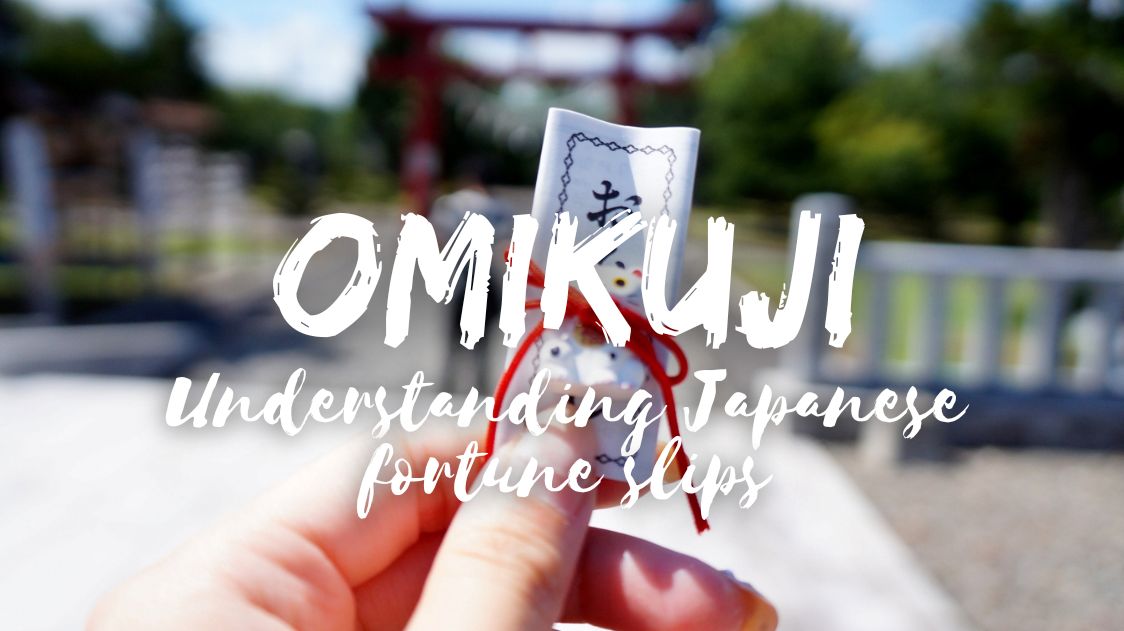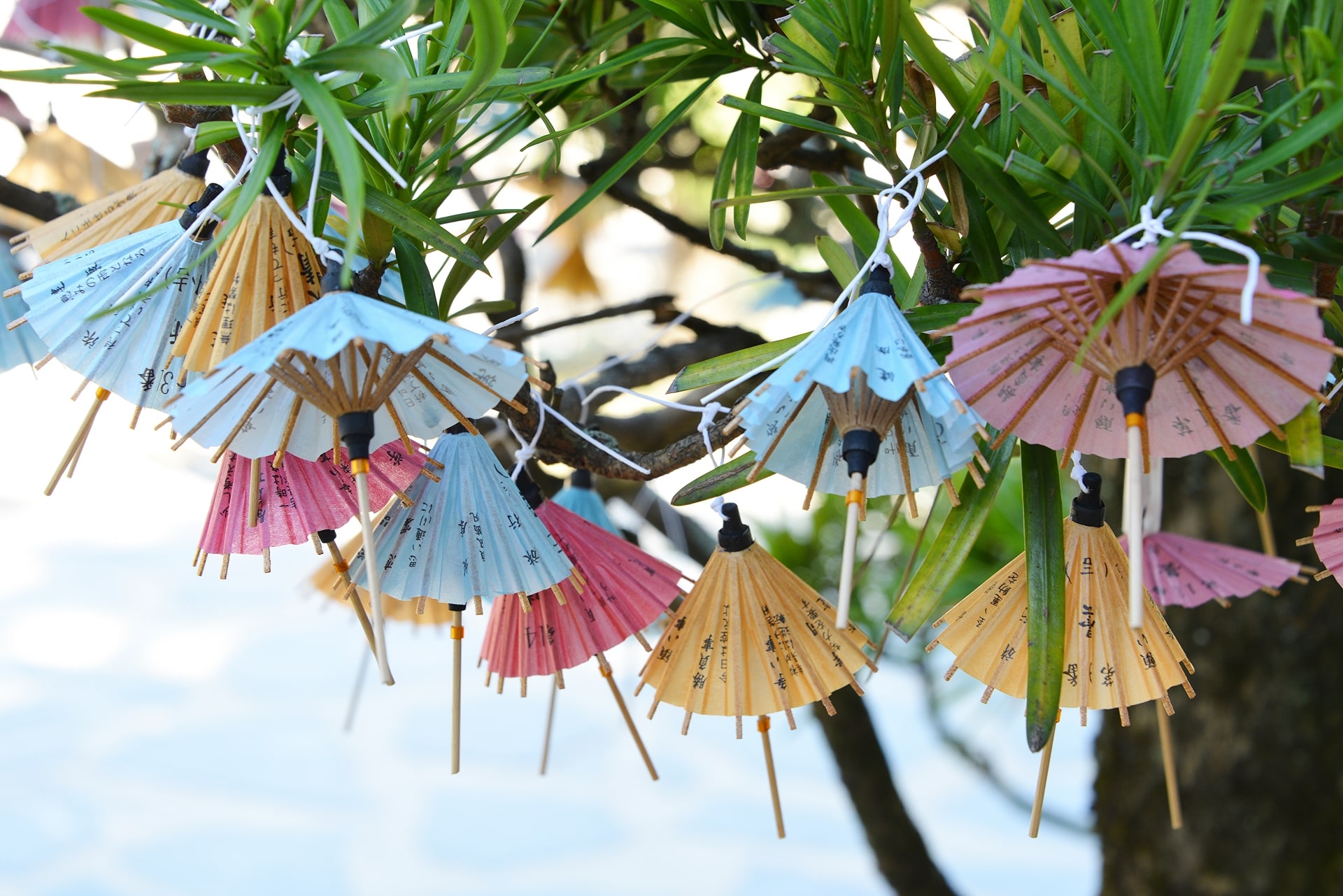Omikuji: Understanding Japanese fortune slips
Guide to Omikuji: Japan’s Fortune Slips Explained

If you’ve visited a shrine or temple in Japan, you have probably noticed those small pieces of paper tied to wooden racks or tree branches. Have you? If you have walked past them without paying too much attention, you should know each one of these represents someone’s brush with bad luck. At least on paper. Ok, it’s not that bad as it sounds, but it’s a fun fortune-telling custom that incorporates some practical advice with playful mystery.
They’re called omikuji, and drawing one is not about predicting fate with laser precision, but about sparking a moment of reflection. It may reveal bright prospects or a warning that leaves you scratching your head, but in any case, the omikuji tradition keeps people coming back for more. In a world that moves fast, this time-honored practice offers a quick pause, a hint of guidance, and maybe a conversation starter with fellow visitors.
What is Omikuji?
Omikuji (御神籤 or おみくじ) are small fortune slips you can draw at many Shinto shrines and Buddhist temples across Japan. The process is simple: you make a small donation of 100 or 200 yen, shake a box or container, then draw a numbered stick (called mikuji-bo) to find out which box you have to open out of a numbered large drawer. Or simply pull a paper from a box. In return, you receive a slip of printed text offering insights on several life areas—health, love, work, and travel, among others. You might get a strong blessing that leaves you smiling or a less encouraging message that prods you to tread carefully.
Despite their brevity, these fortunes aren’t purely random tidbits. The texts, which often come from classical sources, can be poetic and a bit cryptic. Modern shrines frequently provide explanations or even translations to ensure visitors grasp the meaning. Once read, a positive slip might be carried home as a keepsake. A less favorable one is often folded and left behind at the shrine, symbolically transferring its burdens away.
History of Omikuji
Omikuji did not emerge overnight as a quaint tourist attraction. Their origins trace back centuries, beginning as a form of divination used by religious figures keen on understanding divine intentions. Early documents suggest temple monks would rely on methods similar to drawing lots, seeking guidance for important decisions in governance, agriculture, and spiritual practice. Over time, this once-selective ritual filtered down from exclusive circles of learned clergy into the everyday lives of ordinary visitors.
By the Edo period, the practice of drawing fortunes had spread widely, with temples and shrines adopting standardized sets of pre-written messages. Common folk could visit a local shrine and, for a modest fee, tap into these age-old insights. The custom evolved alongside Japan’s shifting social landscapes, adapting to new visitors and broader literacy. In the Meiji era, as society opened up and modernization took root, omikuji began to gain more consistent formats and recognizable categories of luck.
Today’s omikuji, while still rooted in religious tradition, reflect a blend of old and new. Classic scripts remain, but many shrines have introduced contemporary wording or even separate sets tailored to specific interests, such as academic success or romantic happiness. While the basic idea has changed little—draw a slip, discover your fate—its role in society now sits somewhere between solemn tradition and lighthearted pastime.
How to Interpret Omikuji
At first glance, omikuji texts can appear puzzling. The language often includes classical references, subtle metaphors, and time-honored phrases. Each fortune typically declares an overall category of luck, from very auspicious to decidedly cautious, before branching into advice on love, health, finances, and other topics.
Some shrines provide simplified explanations to ensure the message is clear. Others leave it up to visitors to ponder the meaning. Either way, an omikuji’s core purpose is to prompt individuals to consider their decisions with greater awareness. Even when the words sound cryptic, they nudge you to read between the lines, accept guidance, or refocus your priorities.
Omikuji Kanji Meanings
Here’s an overview of the possible outcomes you will get when drawing an omikuji:
| Kanji | Reading | Meaning |
| 大吉 | Dai-kichi | Best possible luck |
| 中吉 | Chu-kichi | Fairly good luck |
| 小吉 | Sho-kichi | A bit of good luck |
| 半吉 | Han-kichi | Half good luck |
| 末吉 | Sue-kichi | Future good luck |
| 末小吉 | Sue-sho-kichi | A bit of future good luck |
| 吉 | Kichi | Luck |
| 凶 | Kyo | Bad luck |
| 末凶 | Sue-kyo | Future bad luck |
| 半凶 | Han-kyo | Half bad luck |
| 小凶 | Sho-kyo | A bit of bad luck |
| 大凶 | Dai-kyo | Really bad luck |
Dealing With Different Outcomes
Omikuji can deliver sunny promises of growth and progress. They can also warn of hurdles, urging caution and patience. Receiving a downbeat prediction might feel disappointing, but it’s not the end of the road. Many people interpret a tough reading as a prompt to be more careful or to work a bit harder in certain areas. Rather than a life sentence of misery, these outcomes are more like a friend’s gentle tap on your shoulder, advising you to stay alert.
If a fortune lands on the darker side, worry not! You can neutralize the bad omen by simply folding again the paper and tying it to a nearby rack or pine tree. This gesture symbolizes leaving the unfavorable luck behind, with a bit of wordplay between the words for pine tree (松 matsu) and the verb “to wait” (待つ matsu) allowing the visitor to move on without lingering dread, as the bad luck will be left behind “waiting”. On the other hand, if your luck seems bright and uplifting, feel free to take it home as a personal reminder!
Special Varieties of Omikuji
Traditional omikuji follow familiar patterns, but in many cases you will also find a whole array of creative twists. There are fortunes geared towards academic achievement for anxious students preparing for exams. Others cater to romance seekers, offering forecasts on budding relationships and advice on smoothing out rough patches. One might stumble upon omikuji linked to certain holidays or times of year, making the experience feel more connected to seasonal shifts or cultural festivals. Some omikuji are written in cute tiny paper umbrellas, and some will be inside cute figurines.
Shrines increasingly recognize that international visitors appreciate guidance in languages other than Japanese. Many now provide English translations or simple explanations, making the experience accessible without losing its charm. Some even package the fortune with a small token, like a charm or a tiny figure, turning it into a souvenir as much as a reading. These variations maintain the core essence—reflecting on personal circumstances—while adapting to modern interests and broader audiences. The result is a lively mix of old and new, ensuring that omikuji remain relevant, interesting, and approachable no matter who draws them.
Here are a few noteworthy omikuji that offer unique experiences for visitors:
- Obihiro Shrine (Hokkaido):
Known for its Shimaenaga Omikuji, these fortunes come encased in a ceramic figure of the adorable “snow fairy” bird, the Shimaenaga. It’s both a fortune and a charming keepsake. - Hirota Shrine (Aomori):
This shrine offers Apple Tsugaru Dialect Omikuji and Scallop Tsugaru Dialect Omikuji, written in the local Tsugaru dialect. These fortunes reflect Aomori’s regional identity and famous produce. - Hase Temple (Kamakura):
The Nagomi Omikuji is modeled after the temple’s “Nagomi Jizo” statues. These small earthenware figures provide not only your fortune but also serve as soothing and comforting companions. - Kozenji Temple (Nagano):
Featuring the Hayataro Omikuji, these fortunes are inspired by the temple’s legendary guardian dog, Hayataro. Each slip includes a small dog figurine symbolizing protection and good luck. - Kifune Shrine (Kyoto):
Famous for its Water Omikuji, these fortunes reveal their message when placed in the shrine’s sacred water. The slow emergence of the text makes for a mystical and memorable experience.
▽Subscribe to our free news magazine!▽
For more cultural tips and information about traveling in Japan, check these articles below, too!
▽Related Articles▽
▼Editor’s Picks▼
Written by
Photographer, journalist, and avid urban cyclist, making sense of Japan since 2017. I was born in Caracas and lived for 14 years in Barcelona before moving to Tokyo. Currently working towards my goal of visiting every prefecture in Japan, I hope to share with readers the everlasting joy of discovery and the neverending urge to keep exploring.
























